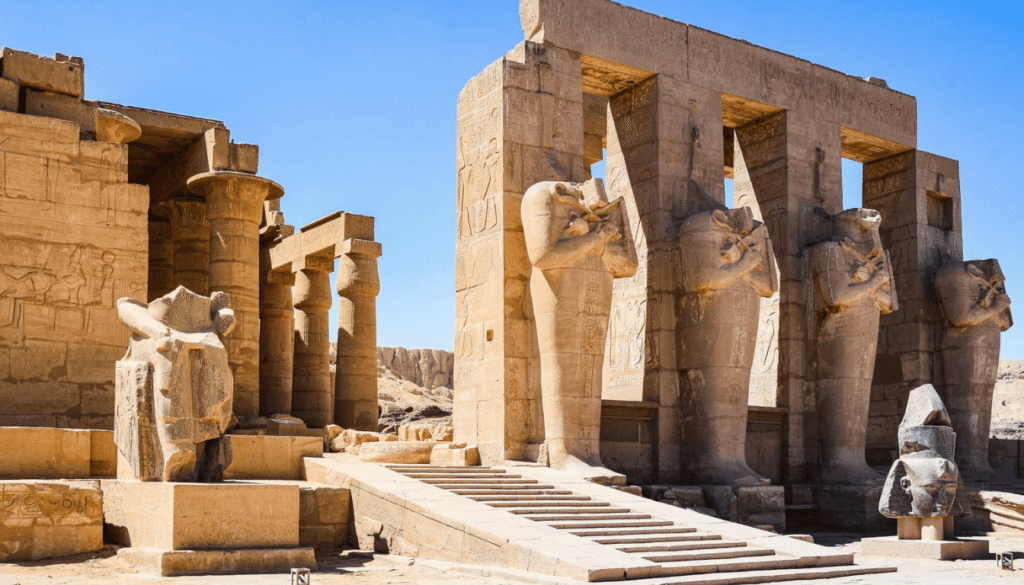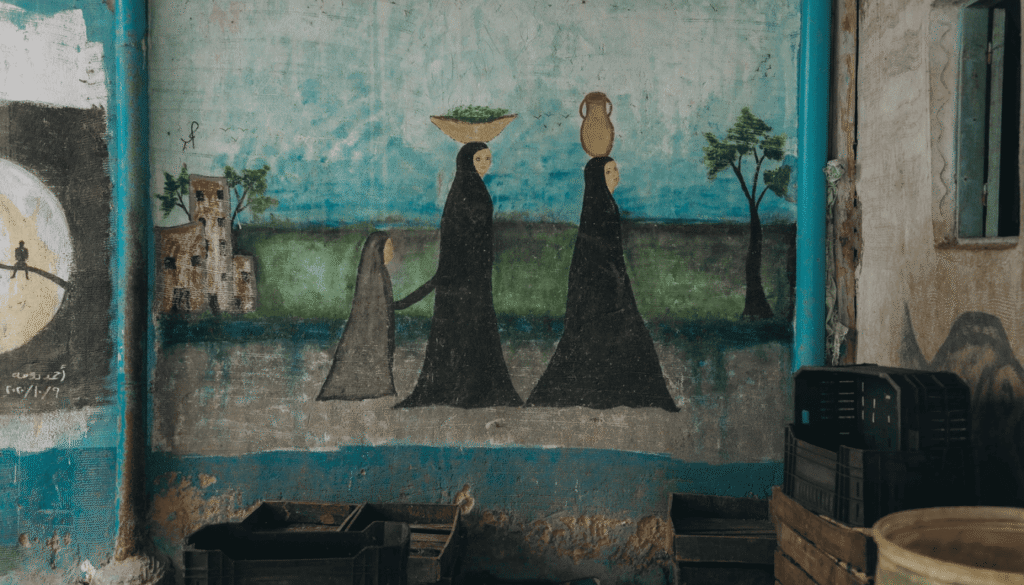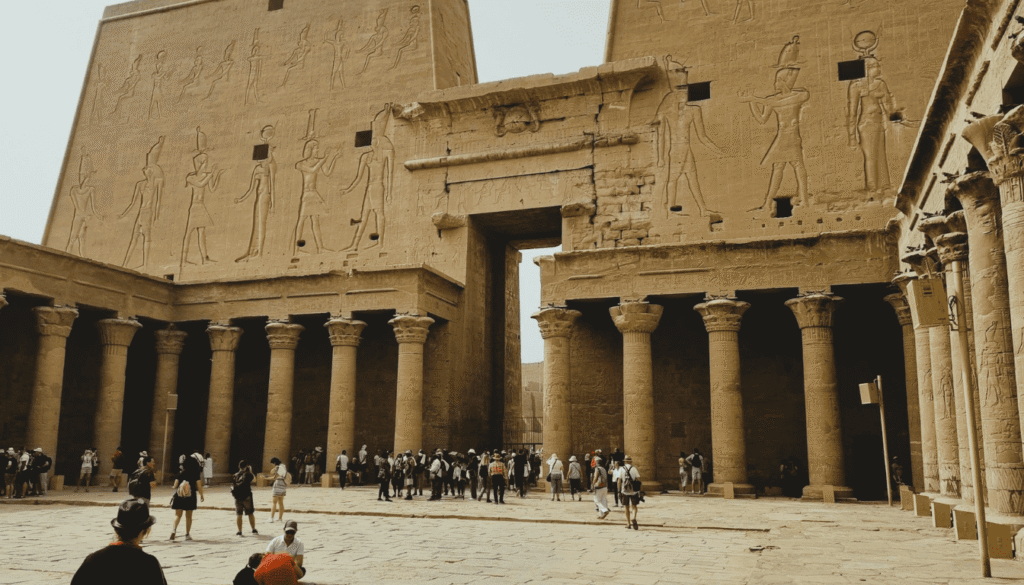Egypt Tourism stands as a timeless journey through history, culture, and unforgettable wonders. So, you wanna know how Egypt became the world’s ultimate travel obsession? Buckle up, because this story is absolutely fascinating! We’re talking about a place that’s been pulling in tourists for literally thousands of years – way before Instagram, way before TripAdvisor, and definitely way before anyone knew what a “bucket list” was.
The history of tourism in Egypt is basically the story of humanity’s eternal fascination with mystery, grandeur, and the impossible. I mean, think about it – people have been traveling ridiculous distances just to see these pyramids since before Christ was born. That’s some serious staying power!
Here’s what we’re diving into:
- How ancient Greeks basically invented Egyptian tourism.
- Napoleon’s accidental tourism marketing campaign.
- The King Tut craze that broke the internet (before there was an internet).
- How modern Egypt became a tourism powerhouse.
- The ups, downs, and comebacks of Egyptian travel.
- Why this 5,000-year tourism story is still going strong.
Why Egypt is an Unforgettable Must-Visit Destination: Complete 2025 Travel Guide.
Ancient Times: When Egypt Was Already “That Must-See Destination”
The Original Ancient Tourists
Get this – tourism in ancient Egypt started around 2500 BCE when Egypt was already ancient by ancient standards! The pyramids were tourist attractions when they were “only” 500 years old. Can you imagine? Ancient Babylonians and Mesopotamians were taking what we’d call “cultural tours” to see these incredible monuments.
But the real tourism boom started with the Greeks and Romans. These guys were absolutely obsessed with Egypt! They saw it as this mystical, exotic land full of wisdom and wonders. Greek scholars would travel there to study mathematics, medicine, and philosophy. It was like their version of studying abroad, except way more dangerous and involving a lot more camels.
Herodotus, this Greek historian everyone calls the “Father of History,” visited Egypt around 450 BCE and basically wrote the world’s first travel blog. His descriptions of the pyramids, the Sphinx, and Egyptian customs were so detailed and exciting that they made everyone back in Greece go “We HAVE to see this place!” His writings are still quoted today – talk about content that stands the test of time!
Roman Celebrity Tourism
The Romans took Egyptian tourism to the next level. When they conquered Egypt in 30 BCE, suddenly every wealthy Roman wanted to take a Nile cruise. Sound familiar? Emperor Hadrian and his boyfriend Antinous visited Egypt in 130 CE, and Antinous even drowned in the Nile (tragic, but it made the trip historically famous).
Roman tourists were pretty much like modern tourists – they wanted souvenirs, they carved graffiti on monuments (seriously, you can still see Roman graffiti on ancient Egyptian temples), and they complained about the heat. Some things never change!
The Romans were so into Egyptian culture that they started building their own “Egyptian” stuff back home. Obelisks, sphinx statues, pyramid tombs – if you’ve ever wondered why there are Egyptian obelisks in Rome, London, Paris, and New York, blame the Romans for starting this trend!
Medieval Times: When Tourism Got Complicated
Islamic Conquest and New Perspectives
When Arabs conquered Egypt in 641 CE, tourism didn’t stop – it just changed flavor. Islamic travelers, scholars, and pilgrims started visiting Egypt as part of their journeys to and from Mecca. They were fascinated by the ancient monuments but interpreted them through their own cultural lens.
Medieval Islamic writers like Al-Masudi and Al-Idrisi wrote incredible descriptions of Egyptian monuments that kept the tourism flame alive during Europe’s Dark Ages. They described the pyramids as “Joseph’s granaries” (yeah, Biblical Joseph), which became a popular Christian interpretation that lasted for centuries.
European Medieval Adventurers
European tourism to Egypt during medieval times was mostly limited to crazy-brave pilgrims heading to the Holy Land who made Egypt a stopover. These weren’t your typical tourists – we’re talking about people willing to risk pirates, bandits, and exotic diseases just to see where Moses supposedly walked.
The Crusades actually boosted European interest in Egypt, even though most Crusaders never actually made it there. Their stories about the exotic East, including Egypt’s wonders, fired up European imaginations and kept Egypt in their travel dreams.

The Renaissance: When Egypt Got “Rediscovered”
European Scholars and the Birth of Egyptology
The 15th and 16th centuries saw a new wave of European visitors – scholars, merchants, and adventurers who were part of the Renaissance spirit of discovery. These guys weren’t just tourists; they were like early travel bloggers mixed with National Geographic explorers.
Venetian merchants trading in Alexandria brought back stories and artifacts that made European collectors go absolutely crazy. Egyptian antiquities became the ultimate status symbol – if you were a wealthy European and didn’t have at least one Egyptian artifact in your collection, you were basically nobody.
The Grand Tour Era
By the 18th century, wealthy Europeans had invented the “Grand Tour” – basically a gap year for rich kids. Egypt wasn’t originally part of the typical Grand Tour route (that was mostly Italy and France), but adventurous travelers started adding it as the ultimate exotic destination.
These early tourists faced incredible challenges – months of dangerous sea travel, desert crossings, language barriers, and the constant threat of disease. But they kept coming! Their travel journals and letters home created an even bigger buzz about Egypt back in Europe.
Napoleon’s Game-Changing Expedition (1798-1801)
The Accidental Tourism Marketing Campaign
Here’s where the history of tourism in Egypt gets really interesting. Napoleon didn’t invade Egypt to boost tourism – he wanted to mess with British trade routes to India. But his expedition accidentally became the greatest tourism marketing campaign in history!
Napoleon brought along 167 scholars, scientists, and artists (along with his 35,000 soldiers). These guys documented EVERYTHING – temples, tombs, hieroglyphs, customs, flora, fauna, you name it. They were like a massive research team with military protection.
The result was the “Description de l’Égypte,” a 24-volume encyclopedia that made Europeans absolutely lose their minds over Egypt. Suddenly, everyone wanted Egyptian-style furniture, Egyptian motifs in their art, and most importantly, they wanted to see Egypt for themselves.
The Rosetta Stone and Decipherment Fever
Finding the Rosetta Stone during Napoleon’s expedition was like discovering the ultimate cheat code for understanding ancient Egypt. When Champollion finally cracked hieroglyphics in 1822, it was front-page news across Europe. Suddenly, those mysterious symbols on temple walls weren’t just pretty pictures – they were readable stories!
This breakthrough turned Egypt from just a place with impressive monuments into a place with readable history. Tourists now wanted to visit not just to see cool stuff, but to literally read the walls and understand what ancient Egyptians were saying. It was like the ancient world suddenly got subtitles!
The 19th Century Tourism Boom
Thomas Cook and the Package Tour Revolution
Thomas Cook, the guy who basically invented modern tourism, started offering trips to Egypt in the 1850s. His first Nile cruise in 1869 was a total game-changer – suddenly, regular people (well, regular wealthy people) could visit Egypt without risking their lives or spending years planning.
Cook’s tours included everything – transportation, accommodation, guides, and even portable bathtubs! He made Egypt accessible to middle-class Europeans who had money but not necessarily the connections or courage for independent adventure travel.
His marketing was genius – he sold Egypt as both educational and exotic, spiritual and adventurous. His brochures promised “the trip of a lifetime” to see “the cradle of civilization.” Sound familiar? We’re still using basically the same sales pitch today!
The Suez Canal Opening (1869)
The opening of the Suez Canal was like building a highway directly to Egypt’s front door. What used to take months of dangerous travel now took weeks on comfortable steamships. European royalty, celebrities, and wealthy families started treating Egypt like their winter playground.
The canal opening celebration was attended by European royalty, and their enthusiastic reports about Egypt’s wonders created even more demand. Suddenly, Egypt wasn’t just for scholars and adventurers – it was the fashionable place to be seen.
Winter Season Society
By the 1880s, Egypt had become the winter destination for wealthy Europeans escaping cold weather. Luxor and Aswan developed entire tourism infrastructures – fancy hotels, guided tours, souvenir shops, and entertainment designed for European tastes.
This was when the classic “winter in Egypt” season was established. European high society would arrive in November and stay until March, treating Egypt like their personal historical theme park. Egyptian entrepreneurs quickly learned to cater to these seasonal visitors, creating the foundation of modern Egyptian tourism.
The Golden Age: Early 20th Century
Howard Carter and the King Tut Explosion (1922)
If you think social media makes things go viral quickly, you should’ve seen what happened when Howard Carter discovered King Tutankhamun’s intact tomb in 1922. This was the first major archaeological discovery in the age of mass media, and it absolutely exploded across the world.
Newspapers couldn’t get enough of the story – golden treasures, mysterious curses, a boy king’s tomb untouched for 3,000 years. People lined up around the block to see Tut’s treasures when they toured the world. Egypt suddenly went from “interesting historical destination” to “OMG we HAVE to go there RIGHT NOW!”
The discovery created what historians call “Tutmania” – Egyptian-style everything became fashionable, from architecture to fashion to home decor. Movies, books, and songs were inspired by the find. Egypt’s tourism industry had never seen anything like it.
The Curse of the Pharaohs Marketing Phenomenon
The supposed “Curse of the Pharaohs” – the idea that disturbing ancient tombs brought bad luck – became accidental marketing gold. Every time someone connected to the excavation died (and let’s face it, people die all the time), newspapers screamed about the curse.
This made Egypt seem even more mysterious and exciting. Tourists came not just to see beautiful artifacts, but to experience the thrill of maybe encountering ancient magic. The curse stories turned Egyptian tourism into an adventure tourism experience.
Hollywood’s Egypt Obsession
Early Hollywood fell in love with Egypt as a film location and story setting. Movies like “The Ten Commandments” (1923) and countless mummy films created a romantic, exotic image of Egypt that made American tourists desperate to visit.
These films often took liberties with historical accuracy (shocking, I know), but they made Egypt seem glamorous and adventurous. Hollywood’s Egypt became a fantasy destination that real Egypt had to live up to – and largely succeeded in doing so.
Modern Egypt: Building a Tourism Nation
Post-Independence Tourism Strategy
When Egypt gained independence in 1952, the new government realized that tourism could be a major economic driver. They started investing heavily in tourism infrastructure – airports, hotels, roads, and training programs for guides and hospitality workers.
President Nasser’s government promoted Egypt as a modern nation proud of its ancient heritage. They wanted tourists to see not just ancient monuments, but also modern Egyptian achievements like the Aswan High Dam.
The Jet Age Revolution
The introduction of commercial jet travel in the 1960s was another game-changer for Egyptian tourism. What used to take weeks now took hours. Suddenly, Americans, Japanese, and Australians could easily visit Egypt, not just Europeans.
Charter flights and package deals made Egypt accessible to middle-class tourists worldwide. The tourism industry exploded – by the 1970s, Egypt was receiving millions of visitors annually.
Sadat’s Open Door Policy
President Sadat’s “Open Door” economic policy in the 1970s welcomed foreign investment in tourism. International hotel chains built luxury resorts, particularly along the Red Sea coast. Egypt started offering both cultural tourism and beach tourism, expanding its appeal.
This period saw the development of modern Sharm El Sheikh, Hurghada, and other Red Sea resorts that attracted European beach tourists who might never have considered visiting for cultural reasons alone.

Political Instability and Tourism Impact
The history of tourism in Egypt hasn’t been all smooth sailing. Political events have repeatedly impacted tourism – wars, terrorist incidents, and political instability have caused dramatic ups and downs in visitor numbers.
The 1967 and 1973 wars with Israel, the 1997 Luxor attack, 9/11’s impact on international travel, and the 2011 Arab Spring all caused major drops in tourism. But here’s the amazing thing – Egypt’s tourism industry has always bounced back, proving that people’s fascination with this ancient land is stronger than temporary setbacks.
The Arab Spring and Recovery
The 2011 Arab Spring was probably the biggest challenge to Egyptian tourism in modern times. Visitor numbers dropped by over 80%, and the industry had to completely rebuild trust with international travelers.
But the recovery has been remarkable. New safety measures, infrastructure improvements, and innovative marketing campaigns have brought tourists back. The opening of new museums, restoration of ancient sites, and development of sustainable tourism practices show that Egypt is thinking long-term about its tourism future.
Why Egypt’s Tourism Story Continues
Archaeological Discoveries Keep Coming
One reason the history of tourism in Egypt keeps evolving is that Egypt keeps revealing new secrets! Recent discoveries – new chambers in the Great Pyramid, intact tombs in Saqqara, sunken cities in Alexandria – mean there’s always something new to see.
These discoveries create fresh waves of international interest, bringing new generations of tourists who want to be among the first to see newly revealed wonders. It’s like Egypt has an infinite supply of “new” ancient attractions!
Modern Infrastructure Meets Ancient Wonders
Today’s Egypt offers the best of both worlds – incredible ancient sites with modern amenities. The new Grand Egyptian Museum, improved transportation, world-class hotels, and professional tourism services mean visitors can experience ancient wonders without sacrificing comfort.
Digital technology is also enhancing the tourism experience – virtual reality tours, audio guides, and interactive displays help tourists understand and appreciate Egyptian history in ways previous generations never could.
Sustainable Tourism and Community Involvement
Modern Egyptian tourism is increasingly focused on sustainability and community involvement. Local communities are becoming partners in tourism development rather than just service providers, ensuring that tourism benefits support preservation and local development.
This approach is attracting a new generation of conscious travelers who want their tourism to have positive impacts. It’s ensuring that the history of tourism in Egypt will continue for future generations.
The Never-Ending Story
The history of tourism in Egypt is really the story of humanity’s eternal curiosity about our past and our need to experience wonder. For over 5,000 years, people have been making the journey to Egypt to see something extraordinary, to connect with ancient civilizations, and to experience the thrill of standing where history was made.
What’s incredible is how consistent the attraction has been – ancient Greeks came for the same reasons modern tourists do. They wanted to see impossible monuments, understand ancient wisdom, and experience a culture completely different from their own. The methods of travel have changed dramatically, but the fundamental human motivations haven’t.
Today, as you plan your own Egyptian adventure, you’re becoming part of this incredible 5,000-year story. You’ll walk where pharaohs walked, see temples that amazed Roman emperors, and experience wonders that have captivated every generation of travelers.
The best part? This story isn’t ending anytime soon. Egypt keeps revealing new secrets, building better facilities, and finding new ways to share its incredible heritage with the world. Your visit won’t just be a vacation – it’ll be another chapter in humanity’s longest-running travel story.
So pack your bags, charge your camera, and get ready to become part of the most captivating tourism history in the world. Trust me, it’s going to be amazing!


Pingback: Top Achievements That Transformed Egypt’s Tourism Sector: 2025 - Discover Egypt Now